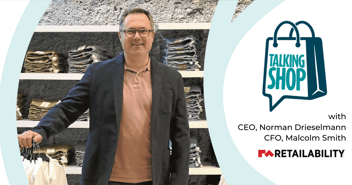Cotton On Group gets a glimpse into the future of eCommerce
How the COVID emergency showed Cotton On Group a glimpse into the future of eCommerce and that anything is possible with agility and cost control.
Glenn Keast, Group Executive for Operations and Technology at Cotton On Group, has spent nearly fifteen years overseeing the growth of one of Australia’s largest global retailers from less than 200 stores to more than 1,300 across 20+ countries today. Here he explains how COVID showed the business what the future might hold, and how the agility to adapt and cost control has been crucial.
What COVID has done is given us a glimpse into what the future might be. It’s also raised awareness with senior leadership of the costs of truly elevating eCommerce.
It has meant putting every process that touches eCommerce under the microscope. Now we look at things with a completely different lens – from a systems point of view and a processes perspective – to maximise trade while continuing to prioritise our people. Previously, our systems and processes had not been challenged or scrutinised at that level.
Eighteen months on, we now have a playbook in place and we’ve invested in the right areas. But we know we need to do more and remain agile while keeping our people front of mind at all times. Although we were set up to meet peaks in online trading, we weren’t set up for a temporary and complete switch to eCommerce in certain markets and, like everyone, faced several challenges.
Unsurprisingly, the demand in leisure wear skyrocketed, and we hurried to adapt. Getting orders out to customers quickly was a huge priority for us, even more so because the consumer was sitting at home excitedly waiting for their parcel to arrive. Our service standard is every parcel should leave the warehouse within 24 hours of the order being placed, but in the very early days of the pandemic, we were challenged to maintain this. I’m really proud of the hard work our people put in to getting us back on track. Their hard work, support for each, and dedication to our customers was inspiring.
One of the most urgent things we had to address was that as an omnichannel retailer we had inventory sitting in our store networks during lockdowns. We quickly needed to put reverse logistics processes in place to be able to get stock depth back into our largest and always open store – our warehouses. Centralising our stock served two purposes – being able to satisfy customer demand through more choice and size depth, and to avoid stock being left in stores gathering dust during lockdowns, creating excess markdowns upon reopening because it might have gone out of season.
We managed the reverse logistics challenge by putting POS systems into our DCs to handle returns from stores, increased our teams on-site and added warehousing space. Of course, these changes added costs but it also provided opportunities for our people while supporting the overall business during a time when our bricks and mortar stores were closed.
Since then, we have improved some of our physical processes and streamlined how we get stock back-on shelf. We are also looking at taking even more warehousing space and putting some robotics solutions in place to further streamline returns. Having experienced what could be part of the future, of online, we’ve been able to test the benefits of putting the appropriate solutions in place so we can keep moving forward.
We’ve learnt now that anything is possible. If you had been given six months to plan for this, you would have come up with a scenario and said that’s crazy, but when it’s thrust on you and so much is on the line, it’s amazing what you can achieve.
We moved fast and responded quickly during the pandemic, and we felt that we could get to our ‘best’ very quickly. We got the right people in the room, made decisions and moved on. It’s hard not to go back to normal now because as leaders we like process, we like governance, and we like control, but we’ve learnt to let the right stuff go and focus on what matters the most to our people and our customers.
We know we’re not out of it yet, and we're constantly challenged to be dynamic and to pivot where needed. We’ve learnt to make quick decisions and that you can’t wait to act on change. An evolved way of working that is serving us and our customers well, and we believe is here to stay.
Glenn Keast
Group Executive for Operations and Technology at Cotton On Group: LinkedIn






